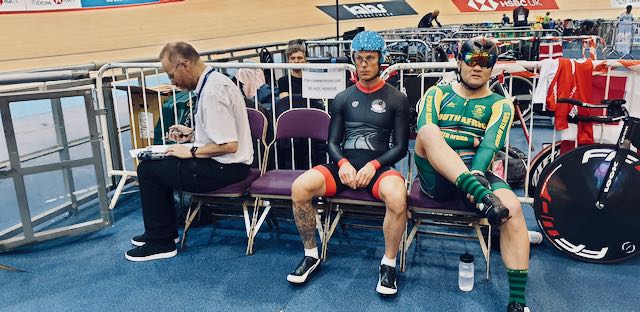Just another short intermission before finishing up my series on Coaching tips. Because the Swedish national championship in track cycling (where I was set to compete in the Masters category) was postponed a few of us riders decided to make a meet of our own, challenging last years performance.
Preparation for the competition begins with the basics. For nothing can replace and nothing gives as big gains as to consistently over time do smart training, avoiding excessive stress, getting good sleep, eating good food and interacting with people you care for. Only after that should we focus on the little things, the things that give you “the marginal gains”.
I’ve found most people actually do respond well to training pretty close to their competition. Some even on the same day as the competition, the other the day before and I don’t think I have ever met anyone who performs his or her best when coming in completely from rest.
This “potentiation” should create minimal fatigue and maximum stimulation of the nervous system in order to help providing the best results in the upcoming performance. For this maximum isometric lifting, weightlifting power movements, jumping and throwing are suitable, as all of these movements activate a lot of muscle mass, but for a very short time. We should probably also include some sport-specific technical exercise or power movement, but be careful of it causing excessive fatigue. For cycling, short sprints is suitable (maybe on rollers).
And oh, yeah we should want more: those last couple of sessions should be similar to the feeling of sexual frustration.
During the last years annual trainer summit “helping the best get better” dutch sprint trainer Henk Kraaijenhof presented on peaking for competition. He told the story about when he, at the European Indoor Championships in 1987, had an increasingly frustrated Nelli cooman sit out her warm-up only to watch the opposition do theirs for the 60m sprint. And then she went out and set a stunning new world record of 7.00.
From my experience I’ve seen the same, and it extends back to the last couple of sessions leading up to the competition where I think too many do to much aerobic or anaerobic work. Some athletes think they cannot do without that, fearing they will loose their capacity, but I do not think there is much truth in that fear. The pressure of competing is better handled by learning to cope in other ways without resorting to the comfort of getting tired.
Like Henk says “in nature there not a lot of warming-up before sprinting”. And while athletes performing in longer events might do with a little more endurance in the last couple of session and slightly more for warm-up than a couple squat jumps or a few seconds of isometrics, I think it’s safe to say that most still overdo it by a landslide. ”You might pull a muscle… or you set a new world record”.
And after the basics are taken care of, just fill up with all the other little things that can tip the result over that last centimeter: swallow down the caffeine tablets with the the beta alanine and beet concentrate and pray to the sprint gods! ?
- “Helping the best get better seminar”, https://helpingthebesttogetbetter.com/?page_id=735
- “Less is more: Standard warm-up causes fatigue and less warm-up permits greater cycling power output”, https://www.researchgate.net/publication/51106401_Less_is_more_Standard_warm-up_causes_fatigue_and_less_warm-up_permits_greater_cycling_power_output
